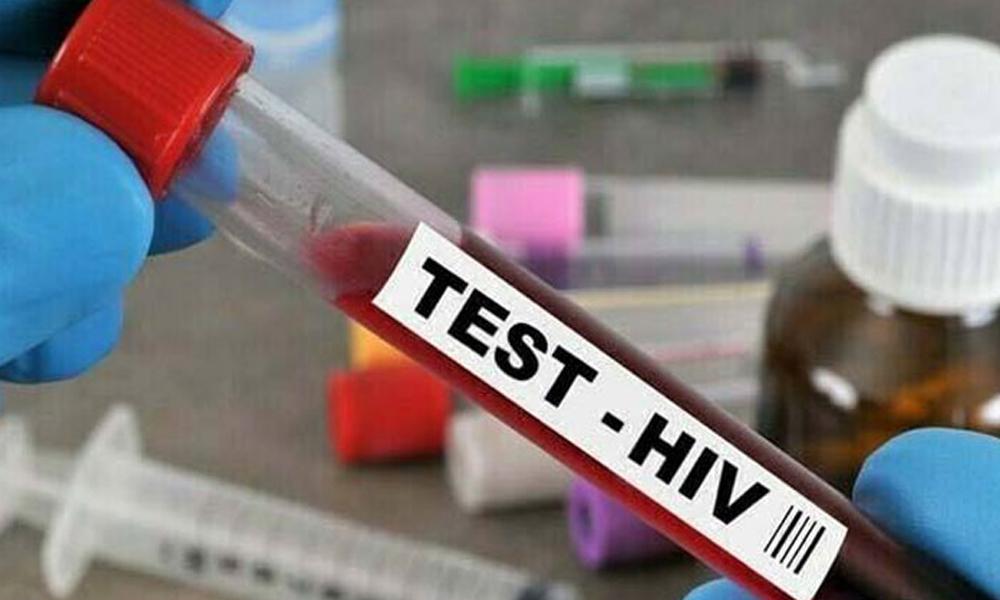Encoded by the KISS1 gene, kisspeptins are naturally occurring ligands for the G-protein-coupled receptor


Kisspeptin-10, a decapeptide fragment derived from the larger kisspeptin protein family, has become a focal point of interest within biochemical and molecular biology research. Encoded by the KISS1 gene, kisspeptins are naturally occurring ligands for the G-protein-coupled receptor GPR54 (also termed KISS1R). The decapeptide sequence represents the minimal functional unit necessary for receptor activation, and its relative stability compared with longer kisspeptin fragments has made it a convenient probe for investigative applications.
Research into Kisspeptin-10 has expanded well beyond its initial discovery as a metastasis suppressor fragment. Investigations now speculate on its potential role across numerous domains, including reproductive signaling, neuroendocrine regulation, cancer biology, metabolism, and neurobiology. This expanding interest reflects a broader recognition that Kisspeptin-10 may serve as an integrative molecular signal influencing multiple axes of organismal function.
Molecular Identity and Receptor Interactions:
Kisspeptin-10 consists of the terminal ten amino acids of the parent kisspeptin protein. This short sequence retains the critical residues necessary for binding to KISS1R, thereby initiating downstream intracellular signaling cascades. Upon receptor activation, the peptide is believed to stimulate Gq/11 proteins, promoting phospholipase C activity, inositol triphosphate generation, and subsequent calcium mobilization.
It has been theorized that these intracellular responses may influence transcriptional regulators, synaptic communication, and endocrine signals. The decapeptide, despite its small size, appears to initiate highly coordinated molecular cascades that might impact both central and peripheral signaling systems.
Reproductive and Endocrine Signaling:
The role of Kisspeptin-10 in reproductive biology has been one of the most extensively explored avenues. Research indicates that the peptide may act as a central gatekeeper of the hypothalamic–pituitary–gonadal axis. Studies suggest that by activating neurons that express KISS1R, Kisspeptin-10 might regulate the release of gonadotropin-releasing hormone, ultimately shaping downstream signaling cascades associated with reproductive physiology.
Interestingly, investigations purport that Kisspeptin-10 may also interact with metabolic regulators, linking nutritional status to reproductive signaling. Such a connection has prompted hypotheses that the peptide represents an evolutionary adaptation to ensure that reproductive activity aligns with the energetic state of the organism.
Cancer Biology and Anti-Metastatic Properties:
Kisspeptins were first identified through their relationship to tumor metastasis suppression, and Kisspeptin-10 has retained a strong research association with oncology. Research suggests that the peptide might inhibit cellular migration and invasion by modulating metalloproteinase activity and altering cytoskeletal reorganization. These impacts could influence how cancer cells interact with extracellular matrices and vascular compartments.
It has been theorized that Kisspeptin-10 may also regulate angiogenesis. Some investigations indicate that the peptide might downregulate vascular endothelial growth factors, potentially restricting tumor vascularization. This speculation has placed Kisspeptin-10 as a possible tool for exploring how tumors establish supportive microenvironments.
Beyond metastasis suppression, research has hinted that Kisspeptin-10 might act in diverse cancer models by modifying gene expression networks linked to cellular adhesion, proliferation, and differentiation. Such properties invite continued examination of whether the peptide could serve as a probe for mapping the molecular underpinnings of malignancy.
Neuroendocrine and Neurological Pathways:
Kisspeptin-10 has increasingly been discussed in the context of neurobiology. Investigations suggest that the peptide may exert influence within limbic and cortical structures, possibly modulating neurotransmitter release and synaptic plasticity. The presence of KISS1R in brain regions beyond the hypothalamus provides compelling grounds for speculation that the peptide participates in broader cognitive and emotional pathways.
It has been hypothesized that Kisspeptin-10 might intersect with dopaminergic and serotonergic systems, shaping processes related to motivation, mood, and social behavior. While these discussions remain preliminary, they highlight the peptide’s potential as a molecular entry point into the study of complex behavioral phenomena.
Metabolic Connections:
A growing body of research has linked Kisspeptin-10 to metabolic pathways. Investigations indicate that the peptide might influence insulin signaling, lipid metabolism, and energy homeostasis. Although the precise mechanisms remain under exploration, it is theorized that Kisspeptin-10 may act as a molecular integrator, aligning reproductive and metabolic processes to ensure survival and adaptability.
Speculative discussions also propose that Kisspeptin-10 could play a role in appetite regulation through hypothalamic circuits. If this proves accurate, the peptide might be an important component in understanding how organisms balance nutritional intake with long-term physiological needs.
Cardiovascular and Vascular Research Implications:
Emerging research has begun to consider Kisspeptin-10 in the context of cardiovascular signaling. It has been suggested that the peptide might influence vascular tone through KISS1R expressed on endothelial and smooth muscle cells. These interactions could theoretically modulate blood flow, vascular remodeling, and endothelial signaling pathways.
Investigations purport that the peptide might also regulate nitric oxide release, offering a potential mechanism by which Kisspeptin-10 interacts with vascular physiology. If substantiated, such impacts would expand the peptide’s significance beyond reproductive and oncological domains into cardiovascular research.
Cross-Disciplinary Research Potential:
What distinguishes Kisspeptin-10 from many other small peptides is the breadth of its possible research applications. It is rare for a decapeptide to be implicated in reproductive endocrinology, cancer suppression, metabolism, neurobiology, and vascular signaling simultaneously. This multifunctionality has prompted some researchers to consider Kisspeptin-10 as a systems-level peptide, one that may reveal integrative principles of physiology.
The peptide’s relatively small size also makes it a valuable probe for experimental systems. Its potential to activate KISS1R selectively is thought to offer opportunities to dissect signaling networks in controlled environments. Moreover, the overlap of receptor expression across multiple tissues means that Kisspeptin-10 may be used to explore questions spanning disparate fields of research.
Conclusion:
Kisspeptin-10 stands as a compelling example of how a short peptide sequence may exert wide-ranging impacts across multiple domains of biological research. Initially studied for its role in metastasis suppression, the peptide has since been implicated in reproductive signaling, metabolic alignment, neurobiology, and cardiovascular regulation. While much remains to be clarified, investigations continue to suggest that Kisspeptin-10 may represent a pivotal molecular signal within organisms.
Its versatility as both a potential modulator and an experimental probe ensures that Kisspeptin-10 will remain a subject of ongoing inquiry. The peptide’s expanding research horizons highlight its significance not only as a molecular fragment but also as a potential integrator of complex physiological systems. As scientific exploration progresses, Kisspeptin-10 may increasingly serve as a gateway for unraveling the interconnected pathways that define organismal function. Check this article for more useful peptide data.
References:
[i] Constantin, S., Wray, S., Colledge, W., Han, S.-K., & Herbison, A. E. (2009). Kisspeptin-10 facilitates a plasma membrane-driven calcium oscillator in embryonic gonadotropin-releasing hormone-1 neurons. Endocrinology, 150(12), 5437-5445. https://doi.org/10.1210/en.2008-0979
[ii] George, J. T., Seminara, S. B., & Padmanabhan, V. (2011). Kisspeptin-10 boluses potently evoke luteinizing hormone secretion in men, and continuous infusion increases testosterone, LH pulse frequency, and pulse size. The Journal of Clinical Endocrinology & Metabolism, 96(8), E1228-E1236. https://doi.org/10.1210/jc.2011-0596
[iii] Sawyer, I., Smillie, S.-J., Bodkin, J. V., Fernandes, E., O’Byrne, K. T., & Brain, S. D. (2011). The vasoactive potential of Kisspeptin-10 in the peripheral vasculature. PLOS ONE, 6(2), e14671. https://doi.org/10.1371/journal.pone.0014671
[iv] Dudek, M., & et al. (2018). Kisspeptin and Metabolism: The Brain and Beyond. Frontiers in Endocrinology, 9, 145. https://doi.org/10.3389/fendo.2018.00145
[v] Wahab, F., & et al. (2013). Kisspeptin as a link between metabolism and reproduction. Metabolism, 62(5), 646-655. https://doi.org/10.1016/j.metabol.2012.10.018
WHO issues unprecedented global guidelines to combat infertility
- 6 hours ago
Religious scholar, minor son shot dead in Peshawar
- an hour ago

How to avoid the dreaded Thanksgiving food coma
- 17 hours ago
Iran to boycott 2026 World Cup draw over US visa row
- 2 hours ago

Nvidia’s ‘I’m Not Enron’ memo has people asking a lot of questions already answered by that memo
- 10 hours ago

The National Guard shooting in DC, briefly explained
- 17 hours ago
India’s economy grows 8.2pc y/y in second quarter, beats forecasts
- 6 hours ago

OnePlus 15R will get a late launch next month
- 10 hours ago
Indian Minister’s statement threat to regional peace: FO
- 3 hours ago

ROG Xbox Ally’s new profiles optimize performance per game for more battery life
- 10 hours ago
Romania’s Defence Minister steps down after CV misrepresentation
- 6 hours ago
Meta introduces nickname feature for posts in Facebook groups
- 2 hours ago








